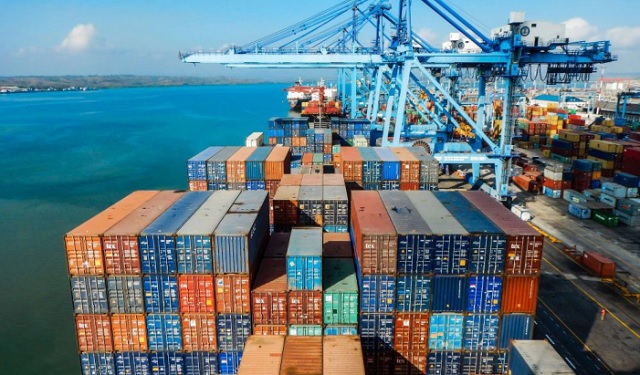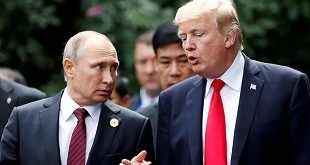
URA saves over $1m in escort costs, transit time from Mombasa reduced
ANALYSIS | IAN KATUSIIME | Digital trade interventions like East Africa’s regional electronic cargo tracking systems (RECTS), and Uganda’s national electronic single window (UeSW) have been praised for enhancing trade, improving revenue collection, and saving traders millions of traders in a December report by Trade Mark Africa.
Titled `Trade Facilitation Report: Driving African Trade through Digitalisation’, the report described the cargo tracking system as a “step change” for East Africa. RECTS is a web-based system that allows for end- to-end tracking of goods under customs control in these countries, significantly improving security, efficiency and reducing costs.
“RECTS, introduced in 2017, has enhanced the monitoring and security of transit cargo on the Northern Corridor from Mombasa through to Bujumbura, particularly for Kenya, Uganda, and Rwanda,” the study noted.
The report findings indicated that in the early days of RECTIS, the Uganda Revenue Authority reported saving over $1 million in physical escort costs for more than 20,000 consignments as a result.
RECTS employs rapid response teams along the Northern Corridor to address any tampering or detours, in real time, ensuring the security of goods in transit.
“Prior to RECTS, the participating countries would operate independent national cargo tracking systems, which created inefficiencies such as prolonged bond cancellations, and delays at border crossings as cargo trucks had to be dis-armed and re-armed,” the report stated.
It said RECTS has addressed these issues, cutting transit time from Mombasa to Kampala from 21 days to just 4-5 days, improving turnaround times for transporters, and boosting cargo security.
Trade Mark Africa is an aid for trade organisation, whose goal is to foster intra-African trade. It is headquartered in Kenya and has operations in Uganda, Rwanda, Burundi, Tanzania, South Sudan, Djibouti, Ethiopia.
It was established in 2010 and has extended its operations to DRC, Mozambique, Malawi, Somaliland, Zambia, and Ghana. It is funded by Belgium, U.K., U.S., Canada among other donors.
In its report, Trade Mark Africa also notes that the cargo tracking system has ensured the safety of truck drivers on the roads, deterring the armed robberies that were common, reducing journey times, and creating faster turnaround times which has positively impacted their social lives.
The report added: “By reducing cases of dumping, fuel adulteration, and fraudulent diversion of high value goods, the system not only safeguards revenue collection but also promotes the success of rules-based business.”
There has been a notable trade boom in East Africa with the near full recovery of the Covid19 disruption. In a speech, Kenyan President William Ruto commended Tanzania for overtaking Kenya as East Africa’s trade hub during an event to mark the 25th anniversary of the East African Community in Arusha, Tanzania.
“Kenya was the leading country in terms of goods and services that we trade in East Africa. Today, Tanzania has overtaken Kenya and I must commend Tanzania for the progress they are making, the numbers are growing of trade between our countries,” he said. The EAC now has seven member states including DRC and Somalia.
Uganda electronic single window
The other digital intervention enhancing trade is Uganda’s electronic single window which was launched in 2014. Being a landlocked country, Uganda faced many hiccups which the UeSW sought to reduce.
Previously, exporters trading in Uganda faced overlapping regulatory demands and requirements, and a forest of government agencies to whom they had to physically submit trade documents for clearance as well as lengthy border delays awaiting customs clearance, all of which inflated the cost and time of trading and reduced their margins. “This deterred trade investments and complicated compliance with international trade agreements,” the report said.
In partnership with the URA, UeSW introduced a series of innovations that streamlined trade processes. “First was to develop a one-stop electronic platform where traders could submit all their regulatory documents at a single point, cutting through bureaucratic red tape.
Secondly, by integrating government departments and agencies into the UeSW, a seamless flow of information was created between agencies, enhancing regulatory compliance and slashing processing times, the authors pointed out. Traders no longer had to navigate Kampala traffic to get from one office to another for document approvals.
The single window is a hub that streamlines several government agencies like National Drug Authority, Uganda Communications Commission, National Enviromental Management Authority, Ministry of Energy and Mineral Development for processing different licenses, permits and clearances.
The report noted that the UeSW slashed transaction costs for documentation by 45% (from $68 in 2015 to $37 in 2021), translating to $24 million in cost savings for Ugandan traders in 2021. By June 2022, this innovation had 7million users.
“These strategic enhancements are perfectly timed, positioning Uganda to capitalise on the opportunities created by the AfCFTA, ensuring it stays competitive, integrated, and at the forefront of a dynamic regional and global trade environment,” it added.
AI tools
Trade Mark Africa also highlights the role of Artificial Intelligence and new tools like Distributed Ledger Technology (DLT) to improve trade logistics. It says that in an era of rapidly evolving international trade patterns, customs organisations worldwide face unprecedented challenges in balancing trade facilitation with risk management which is why tax agencies like URA must leverage AI to stay afloat.
“Their operations are being transformed by the surge in containerised cargo, small parcels and digital commerce, creating new vulnerabilities and complexities in the global supply chain.”
It adds, “At its core, AI enables the automation of processes traditionally performed by human beings through sophisticated algorithms, data analysis, and neural networks.”
The report says a powerful synergy emerges from the convergence of DLT, smart products, and AI, offering a transformative approach to Africa’s digital trade strategies. “For example, Cargo Seer AI41 has pioneered the use of non-intrusive inspection of cargo at ports. Advanced X-ray systems powered by AI identify cargo anomalies, while real-time risk assessment improves inspection decisions.”
Smart seals and sensors enhance cargo security, alerting authorities to unauthorised access and tracking shipments from origin to destination. This data is securely stored and shared on a DLT platform, fostering transparency and trust throughout the trade process. This is being pioneered on the TMA- supported RECTS in East Africa to facilitate cargo tacking and monitoring, and security for cargo transiting along trade corridors.
However despite the great strides made, Trade Mark Africa warns of the risks that digital trade and AI are fraught with. A 2023 report by Interpol stated that there was a 23% year-on-year increase in the average number of weekly cyberattacks per organisation in Africa which was the highest in the world.
This shows the vulnerability of African systems not to mention the weak institutional capacity. In the same report, the average cost of a ransomware attack in 2023 had hit $5.13 million. As a result, there is a call for protection of personal and commercial data as a way to build consumer and business trust in systems.
“This includes adopting national and organisational cybersecurity frameworks, deploying advanced threat detection and prevention technologies, and developing comprehensive incident response plans,” the report advises.
“At the policy level, developing cybersecurity and digital trade policies will better govern digital data flows. This will entail crafting regulations and policies that govern the exchange of goods and services in the digital economy through digital technologies, including the internet, e-commerce platforms, and mobile devices.”
To mitigate some of these anticipated data breaches, TMA partnered with IOTA to create a Trade Logistics Information Pipeline (TLIP) to remove the problem of falsifiability in trade documentation.
The goal of TLIP is to drive paperless border initiatives but critically, to guarantee the integrity of the data entered. “By capturing consignment documentation and supply chain events directly from their original source, TLIP ensures data integrity and reduces reliance on intermediaries. This approach not only streamlines trade processes but also enhances transparency and predictability for all stakeholders involved.”
The report noted that there has been tremendous growth in Africa’s export of digitally delivered services peaking at USD36.7bn n 2023, more than a fourfold increase from $9.2 billion in 2005, compared to slightly over a twofold increase in goods exports over the same period. “Proactive adoption of digital technologies is expected to double Africa’s global share of digital exports.”
 The Independent Uganda: You get the Truth we Pay the Price
The Independent Uganda: You get the Truth we Pay the Price



